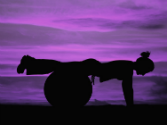
Running hills on our recent trip to Maine was unavoidable….but now I see their value. I’m even wishing I had a fall marathon to run!
Having just returned from nine days in Maine, I was elated this morning as I began a run with my sister, Susan… 9.5 miles of gloriously flat terrain. During the trip I had actually come to dread the start of each run because it was always a whopper of a hill. Actually, with the exception of a four mile run that was an out and back course, there was no way to avoid the hills in Maine. Truth be told, and dreading aside, I found myself a stronger runner at the end of the trip. In fact, I am disappointed that I am not in training for a fall marathon this year because I believe the last few weeks in hilly Maine would have been an outstanding base for a marathon PR.
As a cross country coach I am very interested in the different ways to improve a runners speed over distance, and I have become a big believer in hill workouts as a main part of that process. Arthur Lydiard, a New Zealand marathoner and running coach who is credited with popularizing the sport of running, made the hill workout a crucial aspect of his training program. In fact Lydiard was known also for his dislike of many track workouts, preferring a forest trail, or hilly road for speed/strength training. He would begin the hill training after a proper warm up and would tell his runners to think about “bounding or bouncing” up the hill. In order to do this, runners have to lift and drop their center of gravity and use the body’s weight as a form of resistance to the leg muscles. He goes into great detail as to the form required to run hills this way, including the way the head should be up, with the runner looking straight ahead. Basically Lydiard was looking for a relaxed form, with a coordination of relaxed arms, legs, sholders, neck and facial muscles.
One of the best ways to consistently incorporate hills into a training schedule is to do a weekly hilly 10 miler. A few months back, my daughter Annie and I started running weekly with a group who is training for the Blue Ridge Mountain Relay race in September (11 days from now). As a high school cross country runner, Annie was doing some summer base training to get ready for her fall season and the hill run was a great addition to her preparation. So we ran with the group of runners four Sunday’s in July and early August. Little did I realize how those runs were preparing me for the hilly runs in Maine. Looking back, I recognize the value in the weekly hilly run even more.
According to “the Marathon Website”, hill running serves a physiological purpose (more than one, in fact):
1) Increases your aerobic capacity that enables you to use less oxygen at increasingly longer distances.
2) Improves your running economy that enables you to use less oxygen to run at a faster pace.
3) Increases your stamina that enables you to run farther at a given pace.
4) Builds strength in your gluteals (buttock), quadriceps (front of thigh), gastrocnemius (upper calf), and soleus (lower calf) muscles.
** LESSONS FROM LYDIARD: The following is one of the hill training methods developed by Lydiard: He trained runners on a 2-mile course that included a steep uphill of 300-400 meters (984-1,312 feet). Instructing his runners to run the uphill section by springing up on their toes on each step, they would run up the hill by pushing their legs off and up, rather than directly at the hill for a more buoyant stride. The runners were told to take the hill at two-thirds their fastest pace, then accelerate just before the crest, maintaining their pace over the top, then easing into a long, not overly steep downhill of 800 meters (2,625 feet). Runners landed evenly on the middle of the foot, similar to the uphill bounce, creating a gliding motion down the hill.
Since I’m not currently training for a marathon, and because of my chronically tight hamstrings, I personally avoid “hill repeats” (but I don’t let my high school cross country runners avoid them). I realize the value of running hills, and so I have started to incorporate them more naturally into my running, trying to hit a very hilly course about once a week. Even for runners who live in relatively flat areas of the country (Florida, for instance) hill training can be incorporated by going inside a building (or stadium) and running stairs. “Step running” is great exercise for improving speed and strength. In my opinion, hills can sometimes be too much of a good thing, though. As I get older (and stiffer), I know that too many hilly runs reek havoc on my hamstrings. After Maine, my hamstrings have rebelled and are still in a state of ache. We live in a pretty hilly area, so I have to go out of my way to avoid running too many hills. Since we have a very flat trail run near our house, I run that often for my middle-longer runs (the surface is also a little softer) and I will likely have to always limit my hilly runs to once a week.
How about you…are you running hills as part of your training regimen? Let us know some of the ways you are doing it!
**From Lydiard’s book, Running With Lydiard





Speak Your Mind